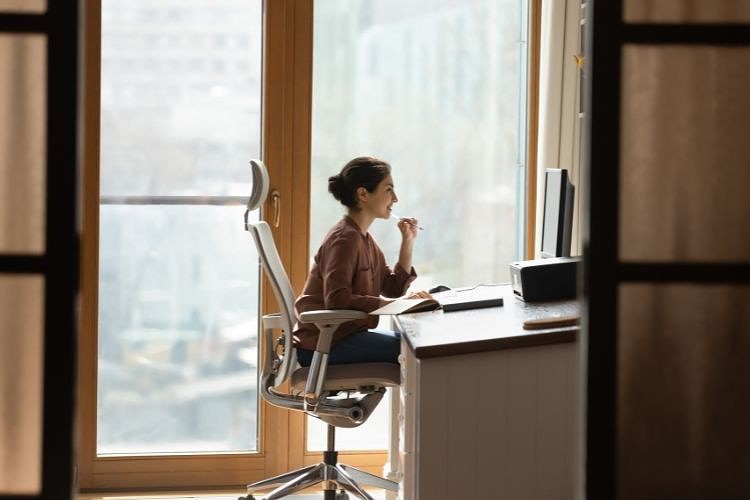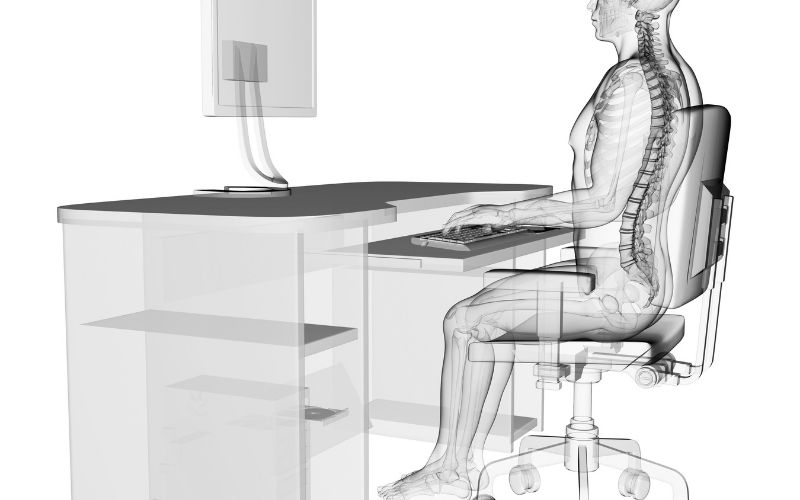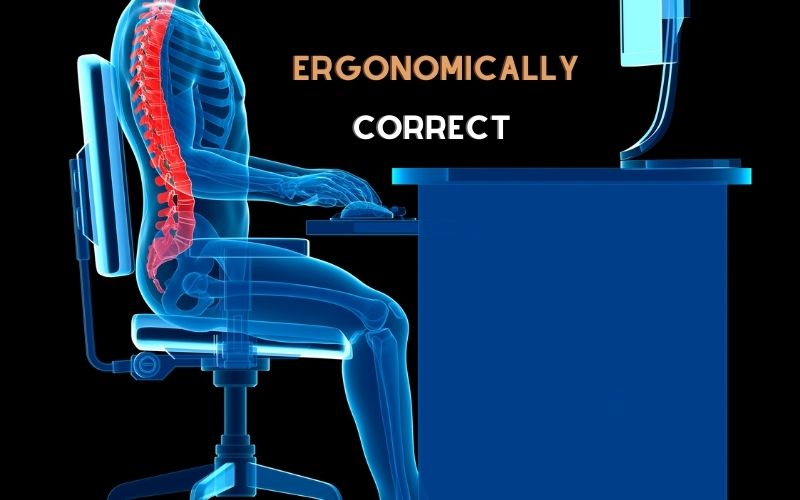Ahh, ergonomics…
This is a word that we often hear people say everywhere. We see it in ads on TV and billboards, and basically anywhere businesses can market and promote their products.
But what exactly does it mean when someone says something is “ergonomically correct”?
It seems like businesses just slap the term on any furniture item or device they release, and everyone just goes along with it.
Well, we’re here to talk about that.
Want to learn what it means to have a product that is “ergonomically correct?” Then keep on reading!
Table of Contents
What Does Ergonomically Correct Mean?

We can easily understand when people describe certain furniture items as elegant, modern, Victorian, and even newer terms such as “cottage-core” or “e-girl/boy.” But what does it mean when something is “ergonomically correct?”
Whether something is “ergonomic” will come down to your body’s natural anatomy and physiology or how your body is naturally built and how it functions.
For something to be considered “ergonomically correct,” it has to be able to keep the user’s body or limbs in their natural resting state to maximize comfort and lower the risk of injuries.
The concern about ergonomics is usually spoken about in office-like settings, where people’s lifestyles are more sedentary.
This includes offices where workers:
- Spend hours sitting in one position
- Spend hours standing

Any setting where the human body is forced to be in a single, uncomfortable position for a long time is where the concern for ergonomics shines through.
So for something to be considered “ergonomically correct” in an office, it has to be able to support the body’s “normal” position when sitting, standing, lying down, etc.
A great example of an ergonomically correct device is an ergonomic keyboard. They usually have a “dome” shape in the middle to keep your hands in a neutral state while you type.
Check out Cloud Nine C989M Ergonomic Mechanical Keyboard on Amazon for a reference.

The Proper Ergonomics for Your Body
Okay, now you know what it means for something to be “ergonomically correct.”
Let’s talk about the proper ergonomics for sitting, standing, and lying down!
The Proper Ergonomics for Sitting in an Office

Lower back pain, stiff joints, headaches, and a stiff neck can all be caused by a bad sitting posture. So here are some ways to ensure that your sitting position is ergonomically correct:
- Sit back with your hips touching the back of your chair. Make sure that the back of your chair is reclined to a 110-degree angle.
- Roll your shoulders back and let them drop to their natural relaxed state. Slouching or typing with your shoulders raised in a “shrugging” position for a long time can lead to stiff shoulders and neck pain.
- Adjust your chair so that both your forearms are straight and parallel to the floor.
- Avoid applying too much pressure on your peroneal nerve by keeping both of your feet flat on the ground.
- To prevent stiff joints and promote blood flow, make sure to stand up and do some stretches after every hour of working in a seated position.
The Proper Ergonomics for Standing for Long Hours
For those who spend their days standing for hours at work, don’t worry. We didn’t forget about you!

Here are ways to ensure that your standing positions are ergonomically correct:
- Invest in a good standing desk. Check out this FEZIBO Height Adjustable Standing Desk .
- Adjust your desk so that your elbows bend at a 90-degree angle with your neck and shoulders in a relaxed state.
- Keep your knees slightly bent while you are standing to avoid hyperextending them or locking your joints.
- If you are using a computer monitor, make sure that it is eye-level and the distance between your eyes and the monitor is the same width as your monitor. So if you have a 15-inch monitor, make sure it’s 15 inches away from your face.
- Don’t hold one standing position for too long, make sure to shift your weight from time to time.
The Proper Ergonomics for Lying Down to Rest

Wait, there’s an ergonomic way to lay down too?!
Yes, there is!
This will help you when you need to relax your joints and muscles after a long day at work. Here are a few tips:
- Laying flat with your legs fully extended can put pressure on your lower back. Use a soft pillow or two under your knees to provide the right amount of support and elevation.
- When laying on your side, keep a neutral spine position from your head to your hips. Support the back of your neck and head by using a soft pillow. Bend your knees, and put a soft pillow between them.
FAQs
We know your head’s full of questions related to ergonomics. So here are a few FAQs that may help you out!
1. What ergonomic devices should I invest in for my office?
This will depend on your work habits and lifestyle. But you can’t go wrong with a height-adjustable desk, an ergonomic keyboard, and an ergonomic office chair!
2. Should I buy an ergonomic office chair?

If you struggle with a poor sitting posture, stiff neck, and sore lower back, then yes! We suggest you give ergonomic office chairs a fair shot.
3. What is the ergonomically correct height for my office desk?
That will depend on your height. Ideally, your office desk should be high enough that your elbows and hands align perfectly flat with the surface of your desk as you type. This is also how you measure your standing desk height.
4. Are standing desks ergonomic?

Yes, they are. Standing desks give its user the freedom to change their positions as they work. If you want the option to switch from standing to sitting, we suggest getting an adjustable desk.
Conclusion
We spoke about what being ergonomically correct means, as well as the proper ergonomics for different bodily positions.
So where can ergonomics benefit you in life? Where do you need it the most?
Is it when you’re sitting for long hours at work? Or is it when you’re on your feet for most of the day?
Maybe you need a bit of help when it comes to rest after a long day at work? Perhaps an ergonomically correct resting position can help you unwind better.
Share your thoughts and experiences with us. We’d love to hear all about them!

My name is Vance, and I am the owner of To Ergonomics. Our mission is to improve your workflow by helping you create a supportive and welcoming environment. We hope that you’ll find what you’re looking for while you’re here.

